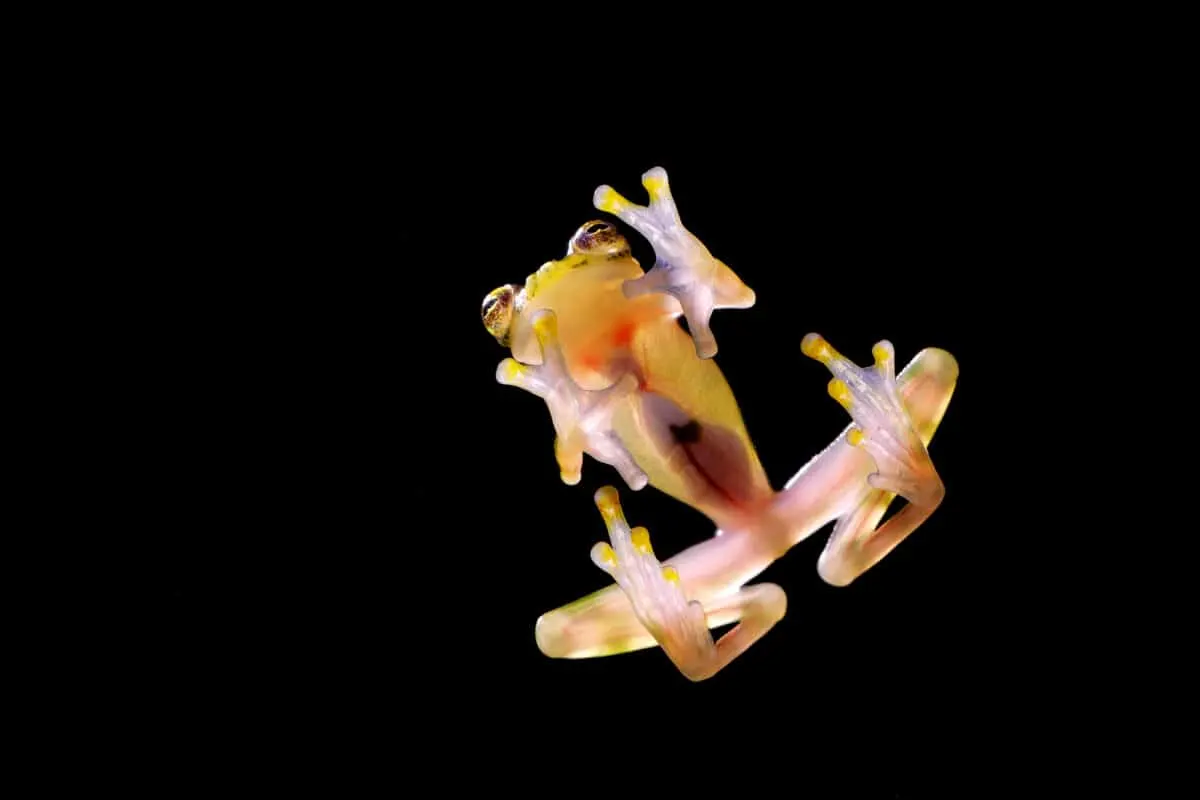In this post you’ll meet the invisible frog that may cause breakthroughs in medical research – as if its transparency wasn’t already fascinating enough!
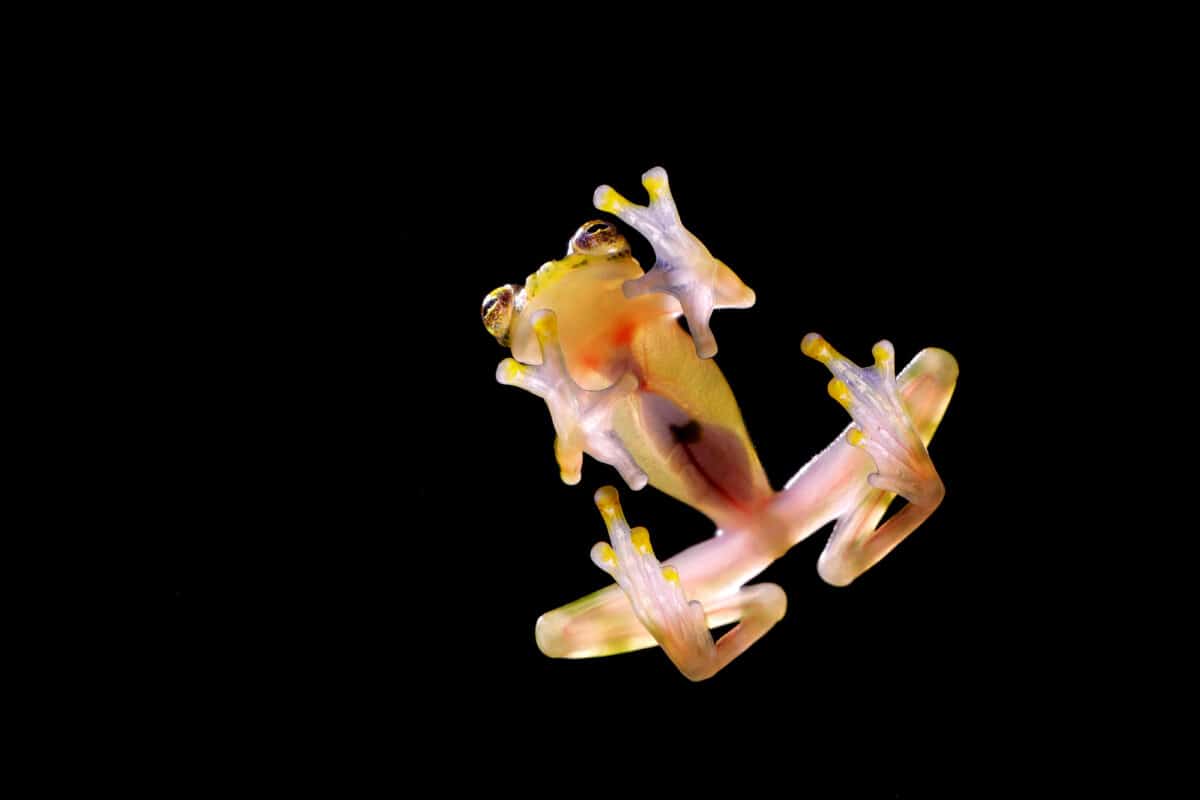
The glass frog, is a small and unassuming amphibian with an extraordinary ability to blend seamlessly into its surroundings. You could say that it almost possesses a super power – a cloak of invisibility.
Its translucent skin, offering a mesmerizing view of its internal organs, has long been a source of intrigue. However, recent discoveries have unveiled a newfound fascination with this enigmatic creature. Its camouflaging abilities may hold the key to groundbreaking breakthroughs in medical research.
First we’ll take you through the physical traits, diet, and habitat of the glass frog. Then we’ll embark on the journey of understanding how it gains its transparent appearance. Lastly, we’ll uncover how the new discoveries regarding this seemingly magical amphibian can lead to life-saving breakthroughs within medical research.
Key points
- Glass frogs have a unique and captivating appearance with translucent skin, allowing a view of their internal organs.
- They thrive in the lush habitats of Central and South American forests, favoring moist environments near streams and rivers.
- Glass frogs achieve transparency through translucent skin and muscles, blending seamlessly into their surroundings for camouflage.
- Their transparency enhances survival by reducing the risk of predation and increasing opportunities for finding food and reproduction.
- Recent research discovered a mechanism in glass frogs that makes them even more transparent during sleep – this discovery holds potential for medical research in clot-related disorders.
Getting To Know the Glass Frog
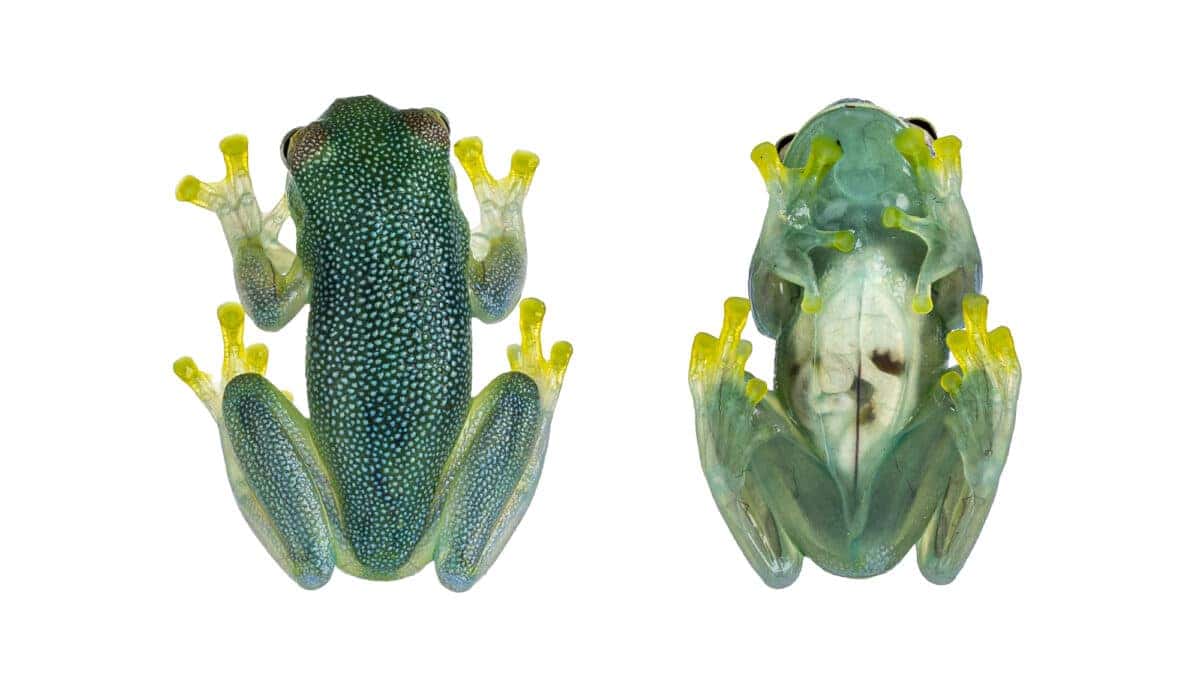
Before we delve into the superpower (its cloak of invisibility) of this impressive amphibian, let’s get to know it a little bit better.
An Overview
| Traits | |
|---|---|
| Color | Shades of green |
| Habitat | Central and South American forests |
| Geographic Distribution | Central and South America |
| Size | 2 to 3 inches (5 to 7.5 cm) |
| Weight | 0.1 to 0.3 ounces |
| Diet | Insects, small invertebrates |
| Animal Type | Amphibian |
Physical Traits
The glass frog has a unique and captivating appearance. These creatures earned their name due to their translucent skin, which allows a mesmerizing view of their internal organs. If you flip a glass frog over, you will be greeted by the sight of their visible hearts, livers, and coiled intestines, all without the need for dissection.
They measure around 2 to 3 inches (5 to 7.5 centimeters) in length and have slender bodies with long limbs. On average, they weigh between 0.1 to 0.3 ounces (3 to 8 grams.) Their lightweight bodies allow them to move with agility and navigate between intricate branches and leaves.
Their dorsal side, or the top portion of their bodies, can range from shades of vibrant green to yellowish-green. Some species may even have mottled or speckled patterns on their skin, resembling the texture of moss or lichen-covered leaves. These color variations serve as further camouflage, helping the frogs blend seamlessly into their leafy environments.
Habitat
The glass frog thrives in the lush and diverse habitats of Central and South American forests. These fascinating amphibians are often found in moist environments, such as tropical rainforests and cloud forests. Here, the humidity and abundant vegetation provide them with optimal conditions for survival.
Glass frogs are particularly fond of areas near streams and rivers, as they require access to freshwater for breeding. These habitats offer a rich array of plant life, insects, and other small invertebrates (their primary food sources.)
Crazy to think that this tiny little frog from South America’s forests can cause medical breakthroughs, potentially saving tons of lives – right?
How Come It’s See-Through?
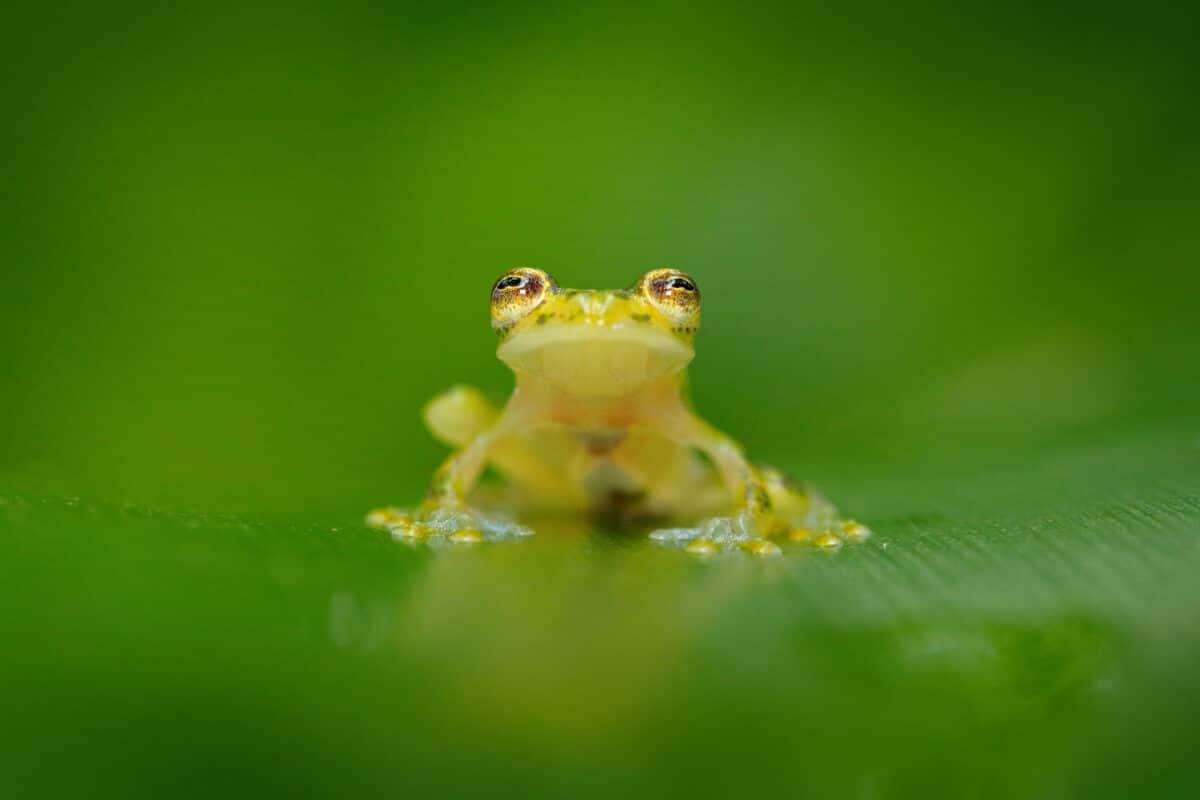
The transparency of glass frogs is a truly extraordinary adaptation. This unique trait allows them to blend seamlessly into their surroundings, making them challenging to detect by predators and enhancing their chances of survival.
Glass frogs achieve their transparency through a combination of translucent skin and muscles that seamlessly blend with the jungle environment. This transparency is a result of the absence of pigmentation in the skin and the specific arrangement of cells and tissues.
Thanks to this incredible way of camouflage these frogs can remain hidden in plain sight.
Increased Chances of Survival
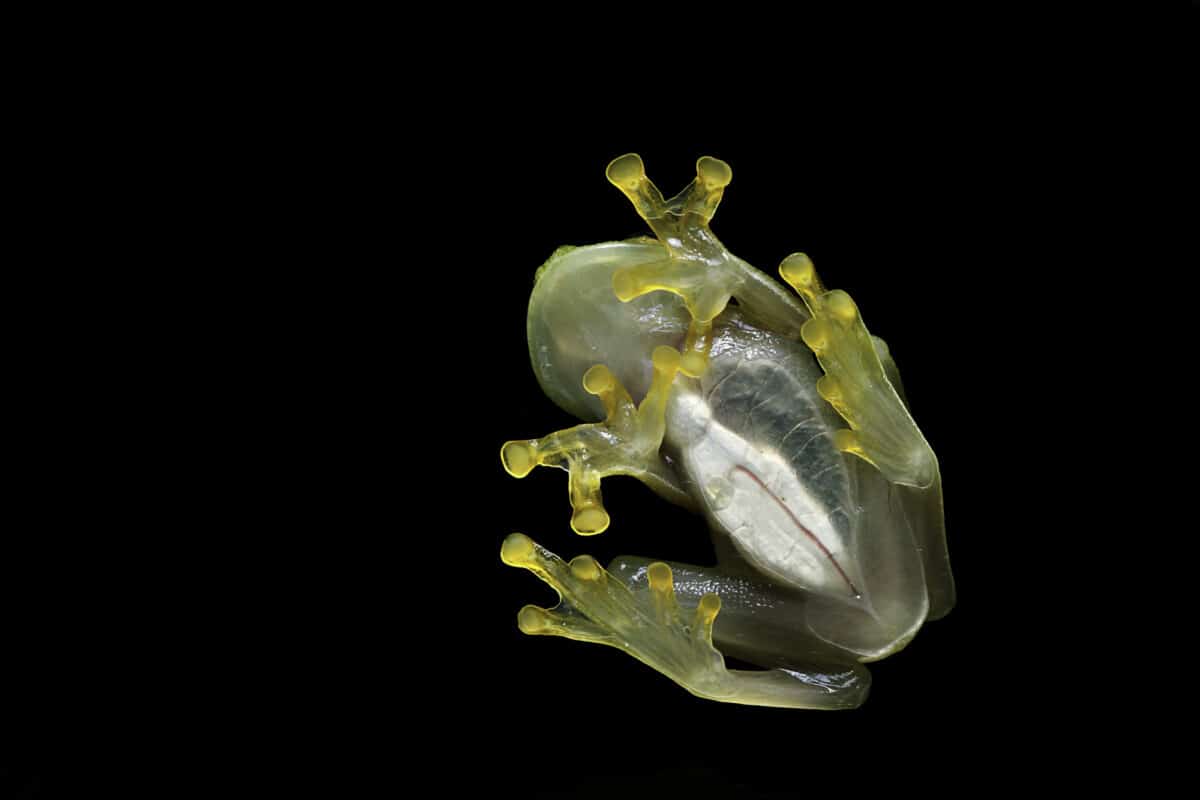
The transparency of glass frogs plays a vital role in increasing their chances of survival in their natural habitats. Their unique ability to blend seamlessly into their surroundings provides them with a remarkable camouflage advantage. The translucent skin and muscles of glass frogs allow them to mimic the appearance of leaves or other vegetation, making it difficult for predators to spot them.
By remaining inconspicuous, glass frogs can evade detection and potential threats, such as birds, snakes, or mammals that may prey upon them. This increased level of camouflage enhances their overall survival by reducing the risk of predation. Likewise, it increases their opportunities to find food, reproduce, and carry out other essential activities.
The New Discovery
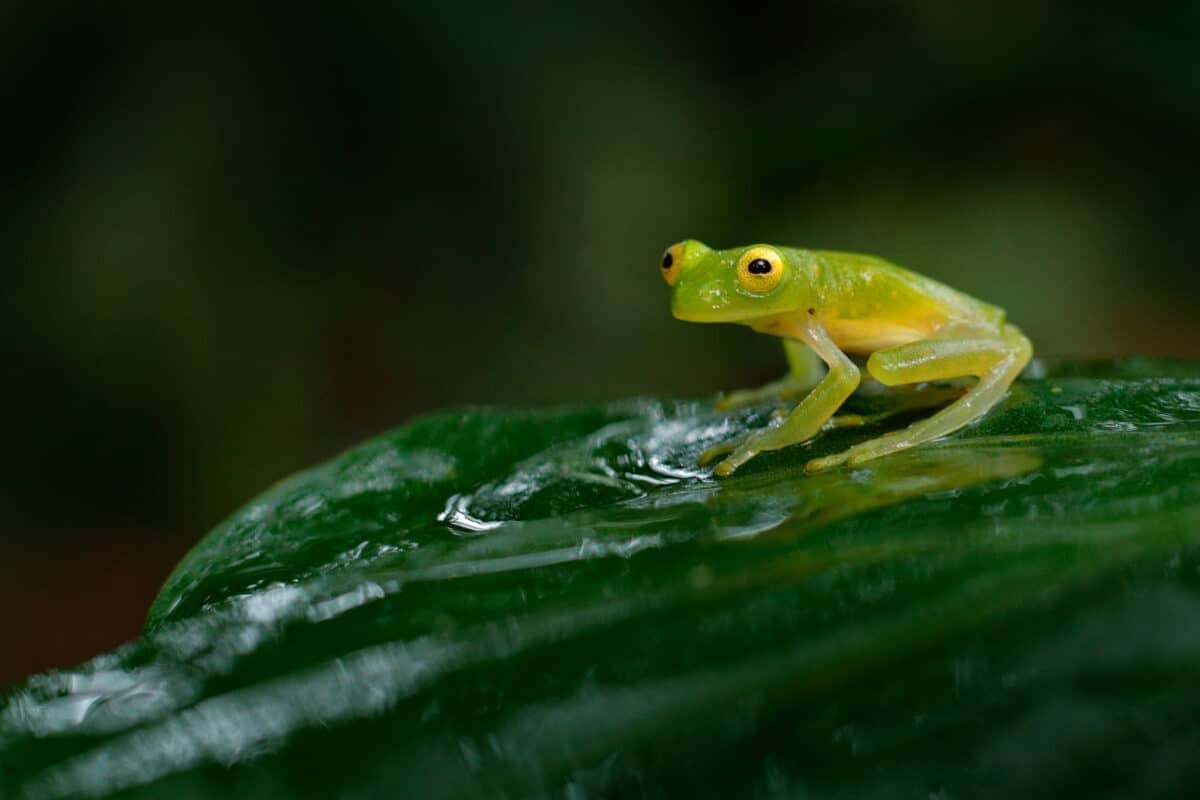
In a recent study researchers made an astonishing discovery about the glass frog’s transparency. By studying fleischmanni’s glass frogs (Hyalinobatrachium fleishmanni), scientists uncovered a previously unknown mechanism that enhances their invisibility.
When these frogs go to sleep, they redirect 89% of their red blood cells into crystal-lined sacs within their livers. These sacs act as reflective chambers that redirect incoming light, making the frogs appear almost invisible. It is this discovery about the glass frog that is new and which could potentially cause major breakthroughs in medical research.
The frogs become two to three times more transparent during sleep. This provides them with an additional layer of protection against predators. By putting on their cloak of invisibility before they sleep, these frogs can enjoy a truly sound sleep with sweet dreams, assured that they are protected from dangerous predators.
Understanding the mechanisms behind the glass frog’s transparency during sleep offers insights into their evolutionary adaptations. Likewise, it sheds light on the broader phenomenon of transparency in nature.
Why This Frog Can Cause Breakthroughs In Medical Research
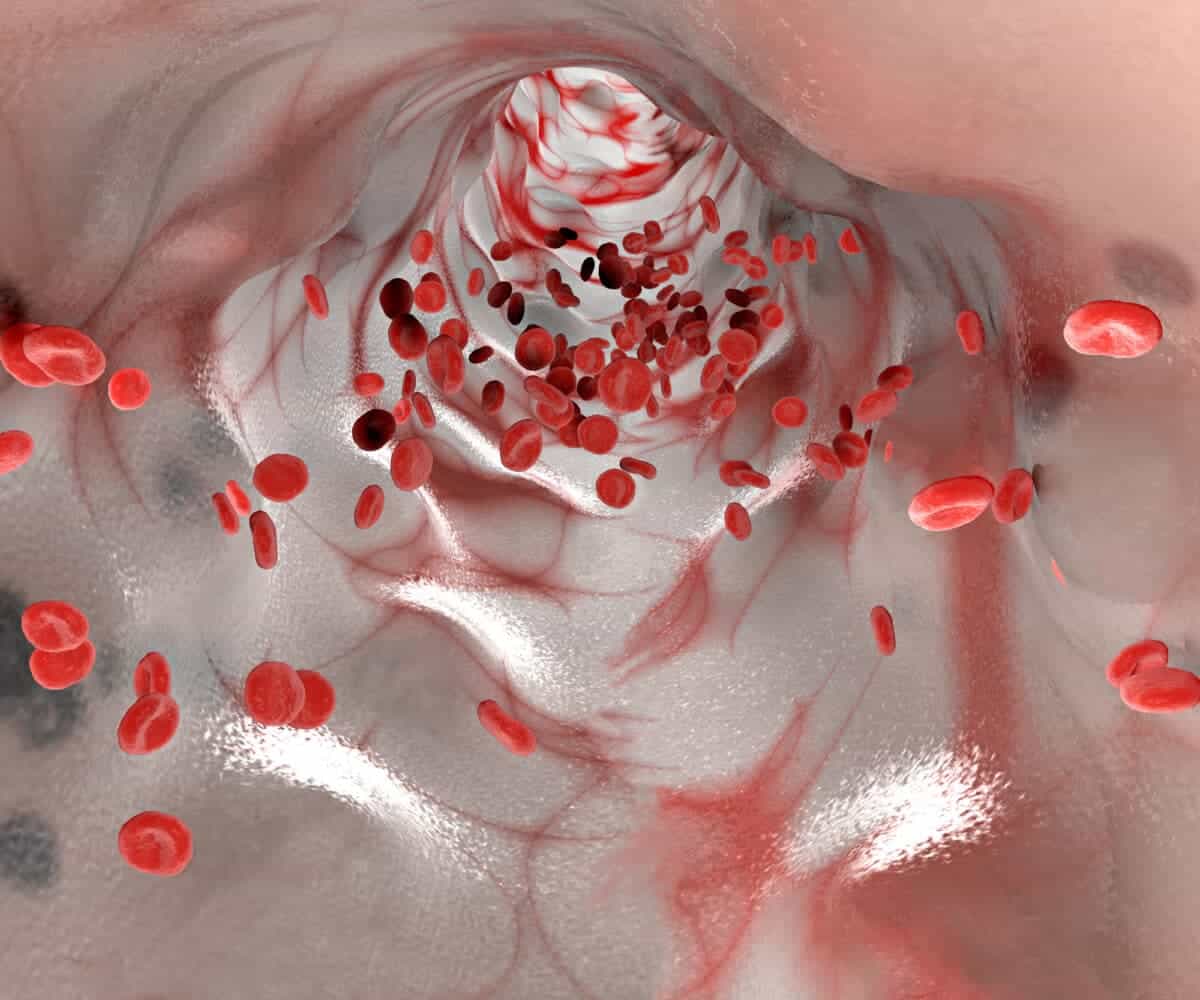
Beyond its captivating appearance and natural camouflage, the glass frog’s unique adaptation holds potential for medical research. The ability of glass frogs to condense and expand their red blood cells without negative consequences has piqued the interest of scientists.
This discovery has especially caught the attention of medical researchers, who have long sought a biological mechanism to address clot-related disorders. The glass frog’s remarkable capacity to control the positioning, concentration, and arrangement of red blood cells (RBCs) – without causing clotting – provides valuable insights into the fields of metabolism, hemodynamics, and blood clotting research.
Normally, a high concentration of red blood cells in one place can lead to clot formation, potentially causing life-threatening conditions like thrombosis. However, glass frogs exhibit an innate mechanism that prevents excessive bleeding while also avoiding excessive clotting.
Wrapping Up
In conclusion, the glass frog’s remarkable transparency and camouflage abilities, combined with its newfound mechanism of enhanced invisibility during sleep, have captivated scientists and opened doors for medical research.
Their ability to blend seamlessly into their surroundings enhances their survival, while their unique control over red blood cells offers insights into clot-related disorders. By studying these extraordinary amphibians, scientists may unlock transformative advancements in evolutionary biology and medical fields, paving the way for breakthrough discoveries.
The glass frog shows how much we can benefit from learning about nature’s wonders – and how much there is still left to discover! Above all, though, this tiny frog’s potential ability to cause breakthroughs in medical research is the perfect example of how you can can make transformative differences – no matter how small you are.
Thank you for reading this article! Continue marvelling at mother nature by reading about the bitter-sweet news the growing kangaroo population, or get to know the world’s oldest lion.
- Magpie Bird Is Reunited with Her Dog Best Friend - April 24, 2024
- Dog Saves Another Dog From Drowning in Fish Pond - April 23, 2024
- Man On Motorbike Rescues Cat From Highway - April 23, 2024

